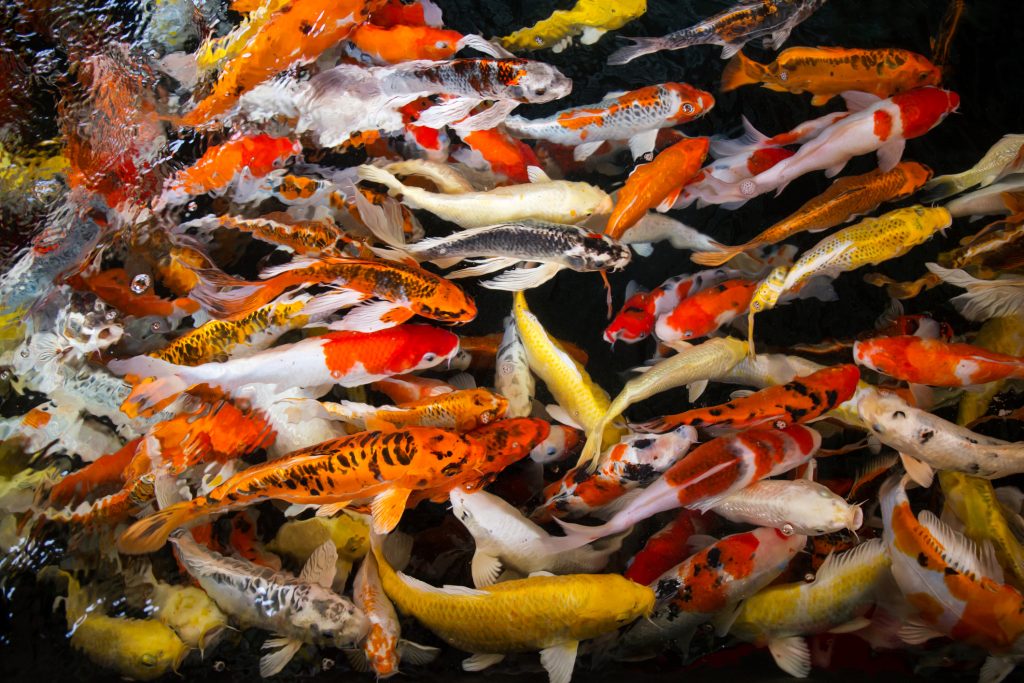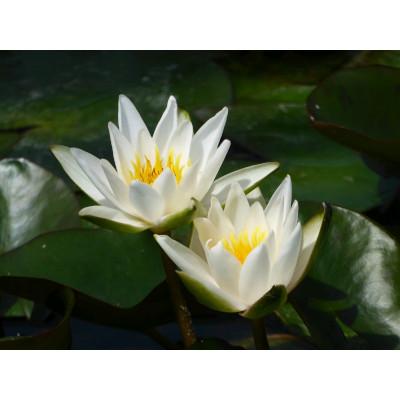There could be several reasons why your pond isn’t clearing, even if you’ve used treatments. See below for some hints and tips!
 The water in your pond is like a living organism; it changes on a daily basis and sometimes, problems may arise. Some of these problems might resolve themselves, others may need a treatment. But on the rare occasion, even after using a treatment, your pond might still be cloudy or murky. There could be a few reasons for this, which we have highlighted below.
The water in your pond is like a living organism; it changes on a daily basis and sometimes, problems may arise. Some of these problems might resolve themselves, others may need a treatment. But on the rare occasion, even after using a treatment, your pond might still be cloudy or murky. There could be a few reasons for this, which we have highlighted below.
Pond Water Volume and types of Fish (Useful Blogs: General Pond Information)
The first thing you need to be aware of is your pond volume and what fish you have in the pond. This will dictate everything about the pond; from the power of your filtration to the amount of chemicals you use in the pond and even which chemicals you use. Without knowing these crucial bits of information, its difficult to know if your pond is being filtered and treated correctly.
It’s quite common for people to not know these details, which means either they can’t identify which treatment to use, or we can’t recommend one when we have these discussions. This means the pond could either be underdosed or overdosed; both of which could be bad for your pond.
You should also pay close attention to how many fish you have in the pond. This is because an overstocked pond will have severe problems with sludge, chemical imbalances, and a lack of aeration. We would advise sticking to the below guideline; approximately 1 inch of fish is equivalent to 30g:
• Goldfish – 3kg of fish per 1000 litres of pond water e.g. 4000 litre pond will support up to 12kgs of fish
• Koi – 1kg of fish per 1000 litres of pond water e.g. a 4000 litre pond will support up to 4kgs of Koi
Our handy Pond Calculator can be used to calculate the volume of water in your pond; just type in the measurements (in metres) and it will give you a result in less than a second.
 Pumps and Filters
Pumps and Filters
It may be the case that you have the incorrect pump and filter for the size of your pond; maybe the pond has been expanded or you went for a slightly cheaper set. There are numerous reasons why the incorrect pump and filter could be chosen. But please try to avoid this! As we say, you should do your research to make the best choice for you and your pond!
Your pump and filter will work together to remove organic debris, sludge, fish waste and other decaying matter from your pond to prevent chemical spikes in your ammonia, nitrites, and nitrates. Therefore, having the correct set up is important! You will also need to regularly clean your pump and filter, to prevent blockages and improve their efficiency; this should be done weekly, but can be reduced depending on the condition of your pond.
You can read more on our Filters & Their Maintenance blog.
pH (Useful Blogs: How to Treat and Prevent a pH Problem)
Whether you have fish in your pond or if it is a wildlife pond, pH fluctuations can occur, and this can reduce water clarity. pH is essentially a scientific measure of how acidic or alkaline your pond; anything less than 7 if acidic and anything higher than 7 is alkaline. If the pH fluctuates too much, bacteria in your pond can die out, reducing your ponds capability of managing the bioload (waste and sludge) in your pond.
Regular testing with either the Tetra Pond Test 6-in-1, the Blagdon Pond Health Test Kit or the Digital pH Tester should help you monitor the pH of your pond to prevent any future problems. You can also use the Velda Bio-Oxydator to prevent pH fluctuations.
High Nitrate Levels (Useful Blogs: Water Quality)
In short, if your nitrate levels are too high, you may also experience an algae bloom; this is because algae feed off nitrates in your pond. This is particularly prevalent in the summer months when the weather is warmer, which also increases algae development.
Like the above, you can use either the Tetra Pond Test 6-in-1 or the Blagdon Pond Health Test Kit to measure the nitrate levels of your pond. If these levels are too high, you will need to increase the healthy bacteria in your pond using the PondXpert Gel Balls, Evolution Aqua Pure Pond Balls, or the Aqua Source Aqua Balance Remedy Sphere.
 New Pond Plants (Useful Blogs: Pond Plants)
New Pond Plants (Useful Blogs: Pond Plants)
Nitrogen, and it’s counterparts nitrites and nitrates, can be added through new pond plants installed into your pond. This is because they are normally fertilised with a nitrogen-based treatment; this can then leach into your pond and cause problems.
Simply place new plants into a bucket of tap water for one week to allow the nitrogen to leak out; then you can put your new plants into the pond.
UV Light (Benefits of UV Filtration in your Pond)
A frequent question customers ask us when discussing treatments is; do you keep your UV light on or off? It’s a hot topic of conversation within the pond world; but you should keep your filter off for a minimum of 24 hours while your pump and filter circulate the treatment. After 24 hours, the UV can be turned back on.
This helps to ensure the treatment is circulated and that it mixes thoroughly to treat whichever problem you have, but turning the UV bulb on after 24 hours ensures that you don’t get a build-up of algae or murkiness in your pond.
Wrong Product
Unfortunately, sometimes the problem might be that you have used the wrong product. We have had people use a bacterial treatment for an algae problem; this won’t work and you need a specific treatment for algae blooms.
Try to identify the correct problem first; so test your water regularly using either the Tetra Pond Test 6-in-1 or the Blagdon Pond Health Test Kit. You can also use our Pond Problems blog to go through various problems you may encounter.

Patience
Try to be patient; treatments may need up to 3 weeks to clear your pond and this depends on the severity of the problem and the temperature of the water. Try to avoid overdosing on any treatments, as this could make the problem worse.
It may also be the case that the problem may clear on its own; incidences of cloudy water can be attributed to a slight protein build up and these can be resolved by just waiting and letting your pump and filter do their job.
You may also find the below blogs useful:
• Aeration Blogs
• FAQ's
• Pond Problems
• Top Tips
As always, if you have any queries, please email us on info@pondkeeper.co.uk.